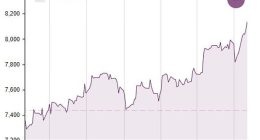SELF-EMPLOYED workers are now being offered a third round of financial support as part of the governments’ measures to help people during the coronavirus crisis.
The self-employment income support scheme (SEISS) gives grants to help those who work for themselves if their income has been negatively impacted.
SEISS has so far given out two rounds of grants to the self-employed since lockdown began.
The third SEISS grant will open for applications next week on Monday, November 30, but for many it will be important to check if they are eligible for support.
Applications for the first grant closed on July 13, 2020 and the second grant, worth up to £6,570, opened for applications on August 17 and closed on October 19, 2020.
What other help is there for self-employed workers?
THE government has also introduced the following measures to help self-employed workers and businesses during the coronavirus outbreak:
Income-tax deferrals: Self-assessment income tax payments, that were due in July, can be deferred to the end of January next year.
Rent support: Businesses who were struggling to pay their rents were protected from eviction until the end of June.
Coronavirus business interruption loan scheme: SMEs can get loans and overdrafts of up to £5million for up to six years and the government will guarantee up to 80 per of these.
Grants of up to £10,000: Small firms can get grants of up to £10,000 to help with ongoing business costs.
VAT payments: VAT payments can be deferred for three months.
Tax bill help: SMEs that cannot afford their tax bills can ask HMRC for a “time to pay” arrangement so any debt collection is suspended.
Business rates holiday: A 12-month business rates holiday has been introduced for many businesses.
Then in September, Chancellor Rishi Sunak announced a third grant as he extended the self-employed scheme to help workers survive the winter.
Earlier this month, he increased the grant to £7,500, covering 80% of trading profits for November to January.
But self-employed workers still have to meet a stringent set of criteria to be eligible for the payout as the Government seeks to avoid widespread fraud.
So before you miss the chance of claiming up to £7,500, we’ve outlined how to check if you’re eligible for the SEISS grant, how much you’ll get and how to apply.
How to check you’re eligible for a third self-employment grant
For those unsure of whether they are elible for the third grant, there’s a simple checklist of criteria to go through:
- In order to claim the payout, self-employed workers must have been eligible for the first and second grant – even if you didn’t claim them. (This is with the exception of some people who became eligible after a couple of rule changes in August, which are outlined below.)
- You must declare that you intend to continue to trade and that you’re either currently actively trading but are impacted by reduced demand due to the coronavirus.
- Alternatively, you must declare that you were previously trading but are temporarily unable to do so due to the pandemic.
- You must have filed a tax return for 2018/19, meaning you must have been self-employed before April 6, 2019.
- You must also earn more than half of your total income from self-employment.
- Your trading profit must be less than £50,000 a year.
The grants are calculated based on an average of your profits over three tax years – 2016/17, 2017/18 and 2018/19.
If you didn’t trade in 2016/17, then it will be based on your average profits in 2017/18 and 2018/19, or in 2018/19 if that’s the only year you traded.
Sadly, self-employed workers who are company directors or run their businesses as limited companies can’t apply.
But if you claim maternity allowance this will not affect your eligibility for the grant.
Self-employment grant: who can claim?
YOU can claim if you’re a self-employed individual or a member of a partnership and you:
- have submitted your self assessment tax return for the tax year 2018/19
- traded in the tax year 2019/20
- are trading when you apply, or would be except for coronavirus
- intend to continue to trade in the current tax year (2020/21)
- have lost trading profits due to coronavirus.
How have the eligibility rules changed?
The Government did tweak the rules on August 17 so you may have been eligible to claim the second grant and now the third despite missing out on the first payout.
New parents who were excluded from the first grant because they were pregnant or caring for a new child may now be able to make a claim.
Self-employed mums and dads who didn’t file their taxes for one or more of the following reasons are now included in the scheme:
- Because you were pregnant or you gave birth,
- You were caring for a child under the age of one,
- You were caring for an adopted child who had been with you for less than a year.
In order to qualify, they’ll also need to meet the other criteria, such as you must have been self-employed in 2017/18 and submitted a tax return for the year before April 23 2020.
New parents will need to fill out an online form asking for HMRC to verify the information about their new child before October 5 2020.
You’ll need your child’s full name and date of birth, the date of adoption, child benefit number, your child’s birth certificate and let them know whether you’re claiming maternity allowance.
If you’re eligible, HMRC will let you know if you’re entitled to claim both grants or just the second payout.
Military reservists who were previously excluded from the scheme can now apply for the help too.
But to be eligible, you must be self-employed and carried out reservist activities for at least 90days during the period your 2018/19 profits are calculated.
Could I have lost my eligibilty from the first two grants?
The Government have also changed the rules for the third grant and this could now rule out some workers who were eligible for the first two grants.
Self-employed workers are now only eligible if they are currently actively trading but are impacted by “reduced demand” due to the coronavirus.
It’s important to note that the phrase “reduced demand” is an alteration from “adversely affected” outlined in the rules for the first two grants.
So this could effect your eligibility and means gathering evidence of “reduced demand” is now crucial.
This includes proof that you have fewer customers or clients than you would normally expect, resulting in reduced activity due to social distancing or government restrictions
It could be that you have one or more contracts that have been cancelled and not replaced or you have carried out less work due to supply chain disruptions.
Evidence could include accounts, confirmation of Covid-19 related loans, or dates of business closures due to lockdown restrictions.
You are not eligible claim if the only impact on your business is increased costs. For example, if you had to purchase face masks and cleaning supplies – this would not be considered as reduced demand.
How much will I get?
Under the self-employed income support scheme (SEISS), the government will cover 80% of your trading profits over three months.
Previously, self-employed workers were only set to receive government grants worth 40% of average monthly profits from November through to January 2021.
The latest grant was set to be worth £3,750 but was increased to £5,160 early in November.
It meant self-employed workers would have received 55% of trading profits for the next three months – including 80% of trading profits in November.
But then, Mr Sunak increased it to 80% of trading profits for November to January – up to a maximum of £7,500.
The government has also announced there’ll be a fourth grant covering February to April 2021, but it’s yet to confirm the details including how much it’ll be.
You don’t have to repay the grants if you’re eligible, but it will be subject to income tax and self-employed national insurance.
Self-employed workers who are struggling can receive the payout as well as claim Universal Credit, but it will be classed as income and may affect how much you receive in benefits.
How do I apply?
You can make your claim via the Gov.uk website once they open for applications.
Self-employed workers will need the following info to claim:
For a deep dive into the how SEISS works, we’ve put together a guide with everything you need to known about the system.
We meet the entrepreneurs who’ve set up their own businesses after coronavirus left them jobless.
Plus, we round up six schemes that have been extended to help struggling Brits during the second lockdown in England.
















